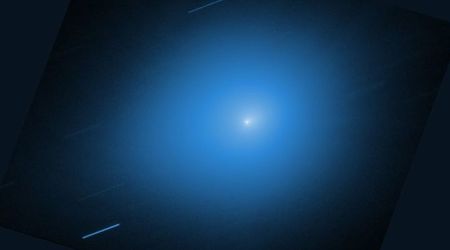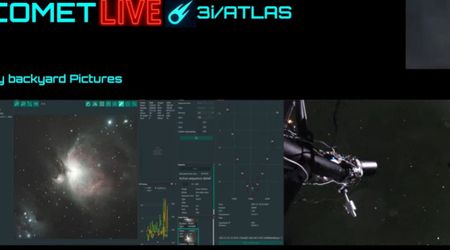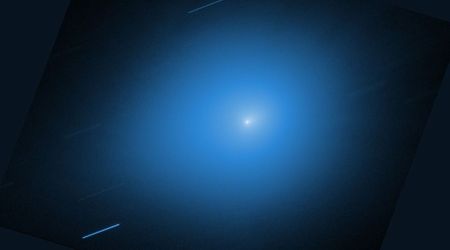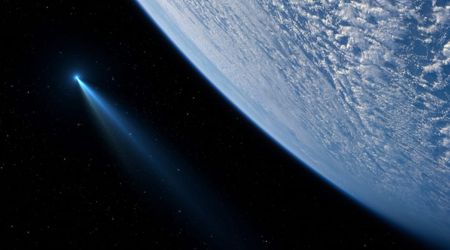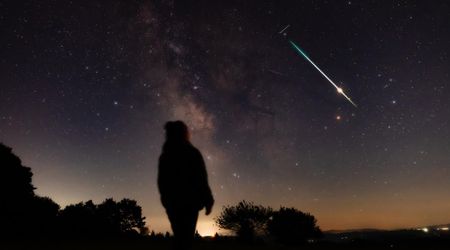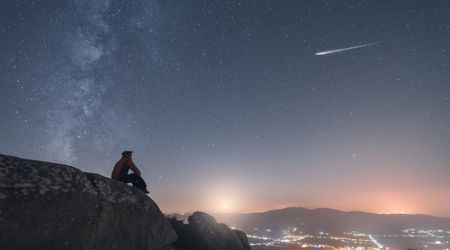Vera C. Rubin Observatory’s first image reveals three stunning celestial surprises hidden in plain sight

The Vera C. Rubin Observatory has released its "first-view" collection of images, providing an unprecedented look into the universe and hinting at the groundbreaking discoveries to come. This initial release, on June 23, showcased a diverse range of celestial wonders, from vibrant nebulae to a multitude of distant galaxies, all captured with the observatory's cutting-edge wide-angle lens and the world's largest digital camera.
Introducing...your sneak peek at the cosmos captured by @NSF–@doescience Vera C. Rubin Observatory!
— NSF-DOE Rubin Observatory (@VRubinObs) June 23, 2025
Can you guess what regions of sky they are?
This is just a peek...join us at 11am US EDT for your full First Look at how Rubin will #CaptureTheCosmos!https://t.co/1a74X2edp8 pic.twitter.com/DE3tx2RQI4
Beyond the breathtaking visuals, the observatory quickly demonstrated its extraordinary detection capabilities. A press conference accompanying the image release highlighted the immediate success in identifying numerous previously unknown asteroids. Within just a few nights of data collection, the observatory pinpointed 2,104 new asteroids within our system. This significant haul includes seven near-Earth objects (NEOs), eleven Jupiter Trojans, and nine Neptunians objects. Additionally, the observatory re-observed approximately 1,800 known objects, bringing the total detections to nearly 4,000, with new findings making up the clear majority.
Meet your new cosmic neighbors ☄️
— NSF-DOE Rubin Observatory (@VRubinObs) June 23, 2025
Introducing a swarm of over 2100 asteroids discovered by NSF–DOE Rubin Observatory!
Rubin discovered these asteroids in about 10.5 hours across 7 nights.
They've never been seen by humanity before...until now.https://t.co/kV788OjB6O
Among the initial images, astronomers identified several intriguing phenomena, offering unique insights into galactic dynamics and stellar structures. One striking image captures a dramatic triple-galaxy collision in progress. Located in the upper-right quadrant of the observatory's inaugural shot, three spiral galaxies are locked in a gravitational battle. Their individual spiral arms are visibly distorted and stretched as they inexorably merge into a single, massive entity. Bridges of matter are already forming between the contorted galaxies, illustrating the ongoing cosmic tango. Scientists emphasize that such galactic mergers are not uncommon, with our own Milky Way galaxy believed to have undergone a dozen similar events over its 12-billion-year history, as per Live Science.

In contrast to the chaotic merger, another image represents a pair of spiral galaxies seemingly maintaining a healthy distance. Despite their apparent proximity, these two galaxies are not interacting gravitationally. This optical illusion is due to their vast separation in space. The Rubin Observatory team confirmed that the galaxy on the right, designated NGC 4411, is approximately 50 million light-years from Earth, while its counterpart on the left, NGC 4411b, lies over 70 million light-years away. This significant distance, coupled with their face-on orientation towards Earth, allows for an undisturbed view of both celestial bodies.

Scattered throughout the observatory's initial imagery are what appear as long, bright beams of light encased within spherical halos. Upon closer inspection, many of these are revealed to be spiral galaxies viewed edge-on, with their faces oriented away from Earth. Unlike face-on galaxies, these appear as flattened, "pancake-like" disks shrouded in glowing dust. One notable example, NGC 4343, even reveals an active galactic nucleus at its core. This bright central region indicates a feeding supermassive black hole, actively drawing in matter at near-light speeds.

Set to begin its decade-long survey this year, the Rubin Observatory will photograph the night sky every few seconds. Equipped with an 8.4-meter mirror and a 6613-pound camera, it will systematically document the entire southern sky every few nights. This rapid and comprehensive scanning capability is crucial for detecting subtle and swift changes in celestial phenomena. Such detailed observation is anticipated to open new research fields in astrophysics and dark matter, while also proving vital for the discovery of closer objects like asteroids and other solar system bodies.
